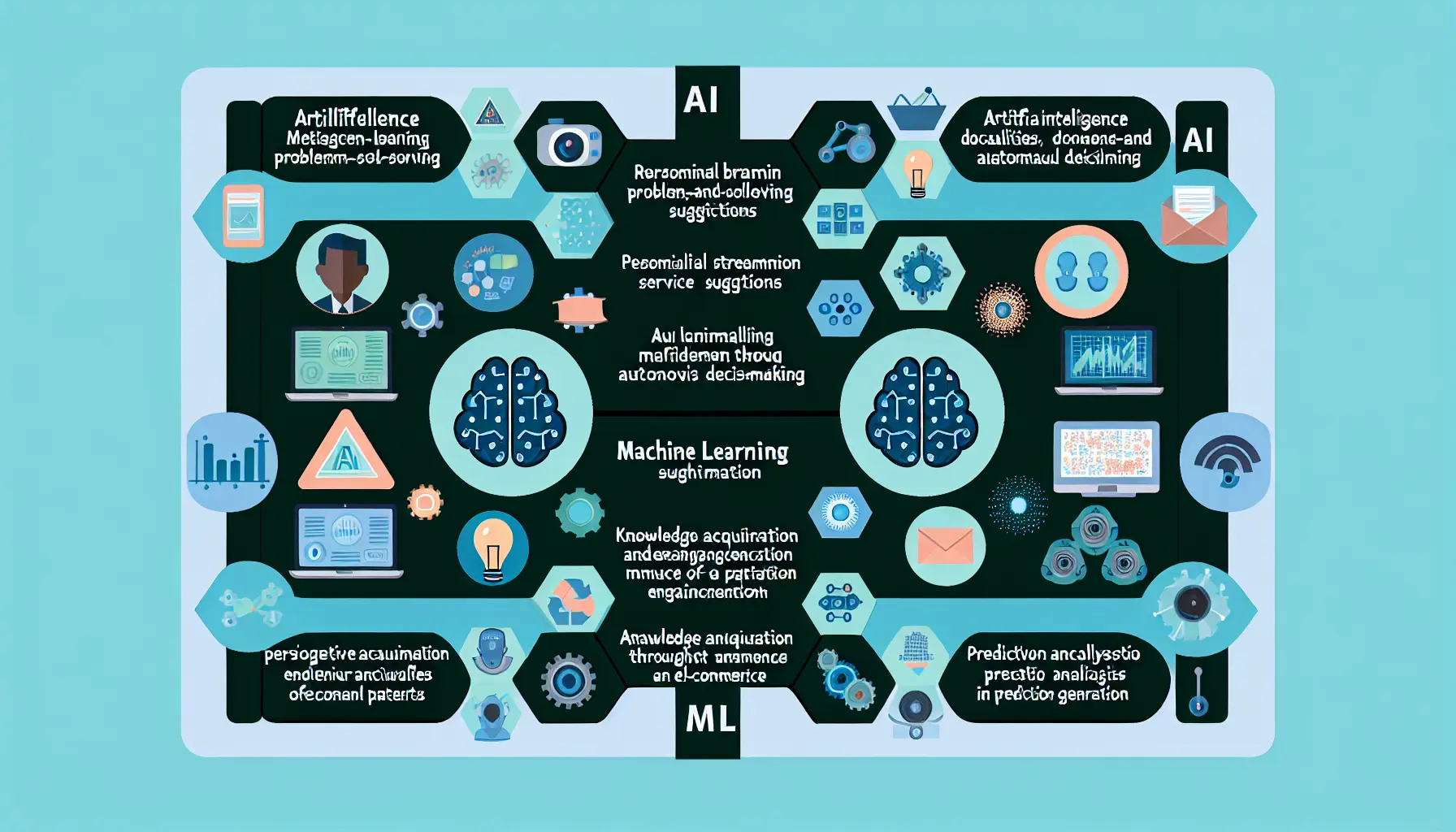
AI vs ML: A Clear Guide to Understanding Their Differences and Impact
Estimated reading time: 7 minutes
Key Takeaways
- Distinct Technologies: AI and ML are interrelated but distinct technologies with different scopes.
- AI's Broad Scope: AI aims to mimic human intelligence in a broad sense, enabling machines to perform complex tasks.
- ML's Focus on Data: ML is a subset of AI that enables machines to learn from data and improve over time.
- Choosing Right Solutions: Understanding the differences helps in selecting the appropriate technology for specific needs.
- Impact Across Industries: Both AI and ML are transforming industries like healthcare, finance, and manufacturing.
Table of Contents
- What is Artificial Intelligence (AI)?
- Core Capabilities of AI
- What is Machine Learning (ML)?
- Essential ML Features
- Key Differences Between AI and ML
- Scope and Purpose
- Application Approach
- Choosing Between AI and ML
- Real-World Applications and Impact
- Future Trends and Developments
- Implementation Guidelines
- Conclusion
- Frequently Asked Questions
What is Artificial Intelligence (AI)?
Artificial Intelligence represents computer systems that can perform tasks typically requiring human intelligence. Think of AI as a digital brain that can reason, solve problems, and make decisions based on the information it processes.
Core Capabilities of AI
- Problem-solving through logical reasoning
- Adapting to new scenarios and challenges
- Processing and understanding natural language
- Making autonomous decisions
Real businesses use AI daily. Netflix suggests shows you might enjoy, while Tesla's vehicles navigate complex traffic scenarios. Banks detect suspicious transactions, and virtual assistants like Siri handle your daily queries. These are all examples of AI in daily life.
Understanding the differences between AI and ML is crucial. For a detailed comparison, visit Artificial Intelligence vs Machine Learning.
What is Machine Learning (ML)?
Machine Learning functions as a specialized branch of AI that focuses on data-based learning and improvement. ML systems analyze patterns in data to make predictions or decisions without explicit programming.
Essential ML Features
- Learning from historical data patterns
- Improving accuracy over time
- Making data-driven predictions
- Automating pattern recognition tasks
Practical ML applications surround us. Gmail filters spam emails, streaming services recommend content, and online retailers predict inventory needs based on shopping patterns.
For a deeper dive into the differences between AI and ML, check out The Difference Between Artificial Intelligence and Machine Learning.
Key Differences Between AI and ML
Understanding these technologies helps choose the right solution for specific needs:
Scope and Purpose
- AI: Creates systems that mimic human intelligence broadly
- ML: Focuses specifically on learning from data to improve performance
Application Approach
- AI: Uses various methods including rule-based systems and cognitive modeling
- ML: Relies primarily on statistical analysis and pattern recognition
For more insights on the distinctions between AI and ML, visit Machine Learning vs AI.
Choosing Between AI and ML
Consider these factors when selecting the right technology:
Use AI When You Need:
- Complex decision-making capabilities
- Human-like reasoning and interaction
- Broad problem-solving abilities
Choose ML When You Have:
- Large amounts of historical data
- Specific, data-driven goals
- Clear patterns to analyze
Real-World Applications and Impact
These technologies transform various industries:
Healthcare
- AI: Diagnosis assistance and treatment planning
- ML: Disease prediction from patient data
Finance
- AI: Investment strategy development
- ML: Credit risk assessment
Manufacturing
- AI: Quality control automation
- ML: Predictive maintenance
Future Trends and Developments
The AI and ML landscape continues to evolve:
- Integration of AI and ML with Internet of Things (IoT)
- Advanced natural language processing capabilities
- Automated machine learning (AutoML) solutions
- Edge computing applications
For more on edge computing applications, see our article on Understanding Cloud Native Architecture.
Implementation Guidelines
Follow these steps for successful deployment:
- Define clear objectives and success metrics
- Assess available data quality and quantity. See our Best Cloud Provider: AWS vs Azure vs Google Cloud for more insights.
- Consider scalability requirements
- Plan for ongoing maintenance and updates. Read our Best Cybersecurity Tools Guide.
Conclusion
AI and ML offer powerful solutions for modern business challenges. Understanding their differences helps make informed decisions about which technology best suits specific needs. Start small, focus on clear objectives, and scale based on results.
Remember: Success with either technology requires careful planning, quality data, and regular optimization. Consider your specific needs, available resources, and long-term goals when choosing between AI and ML solutions.
For further reading on this topic, check out the article on Machine Learning vs Artificial Intelligence by MIT.
Frequently Asked Questions
What is the main difference between AI and ML?
AI is a broad concept of machines being able to carry out tasks in a smart way, whereas ML is a subset of AI that allows machines to learn from data without being explicitly programmed.
Can Machine Learning exist without AI?
Machine Learning is a subset of AI; thus, ML is inherently a part of AI. However, AI can exist without ML, using rule-based or statistical methods.
How are AI and ML used in everyday life?
They are used in various applications like virtual assistants, recommendation systems, fraud detection, autonomous vehicles, and personalized advertising.
Which should I choose for my project, AI or ML?
It depends on your project needs. If you require complex decision-making and human-like reasoning, consider AI. If you have data-driven goals and patterns to analyze, ML might be more appropriate.
What are some future trends in AI and ML?
Future trends include integration with IoT, advances in natural language processing, automated machine learning solutions, and edge computing applications.









